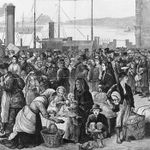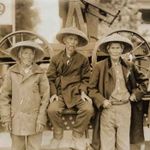115: They built the railroad. But they were left out of the American story.
The U.S. transcontinental railroad is considered one of the biggest accomplishments in American history. Completed in 1869, it was the first railroad to connect the East to the West. It cut months off trips across the country and opened up Western trade of goods and ideas throughout the U.S.
But building the railroad was treacherous, brutal work. And the companies leading the railroad project had a hard time retaining American workers. So they began to recruit newly arrived immigrants for the job, mainly Chinese and Irish. And these immigrants, who risked their lives to construct the railroad, have largely been left out of the story.
In recent years, though, there has been a new emphasis on reframing the narrative to include the perspectives, contributions and struggles of railroad workers, not only in scholarship, but in the arts.
On Nov. 17, Cal Performances is presenting American Railroad by Silk Road Ensemble, as part of its 2023-24 season of Illuminations: Individual and Community. It's one of several notable works in recent years that explores the lives of the immigrants who built the U.S. transcontinental railroad.
Listen to the episode and read the transcript on Berkeley News (news.berkeley.edu).
Music by Silkroad Ensemble and Blue Dot Sessions.
Photo courtesy of San Francisco Public Library.
Hosted on Acast. See acast.com/privacy for more information.









